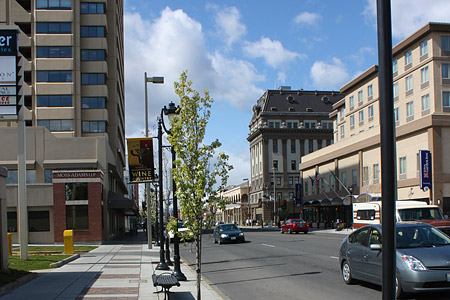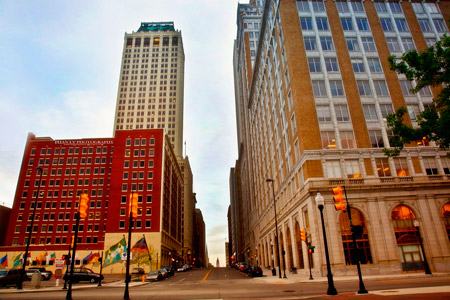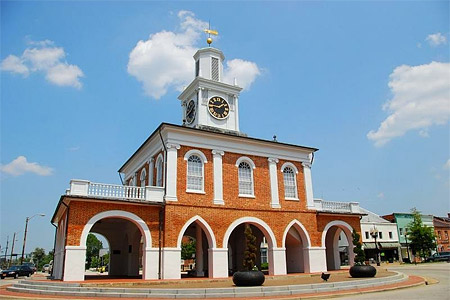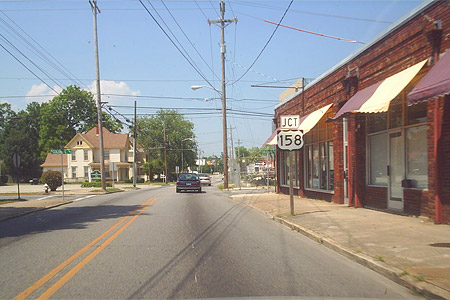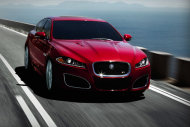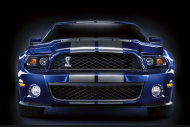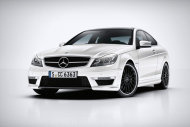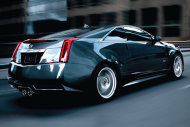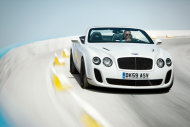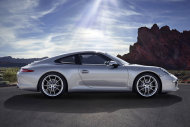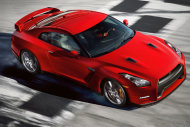Every year, car manufacturers roll out new makes and models that push technology to the breaking point. Edmunds.com, an automotive-information Web site, evaluates these cars and explains what consumers are getting for their money. This includes engine design, cosmetic details, and, naturally, speed.
The evaluations are based on the opinions of Dan Edmunds, the site’s director of vehicle testing. He’s the one who actually test drives the cars, so CNBC.com spoke with him to get his thoughts on 2011’s 10 fastest models. ” I don’t think there’s a stinker in the bunch,” he said.
Some of the cars on this list are new models out this year, or rolling out the next. Others have remained mechanically unchanged for two or three years, but still pack a wallop that only a handful of other cars have managed to beat.
The cars are ranked on the rate at which they can go from zero to 60 miles per hour, not their top speed. After all, the average driver is unlikely to drive on U.S. highways at 215 mph, but is almost certain to get from zero to 60.
No. 10 Jaguar XFR (2010-2011) Manufacturer’s Suggested Retail Price: $82,875
According to Edmunds, the Jaguar XFR is “one of those cars that people who like Jags just really like. They like them because of the way they look. They’ve definitely got that Jag styling that a lot of people are looking for.”
The car goes from zero to 60 in 4.5 seconds. It has a 510 horsepower engine, and is elegant and luxurious on the inside. “It’s probably one of the more deceptive cars on the list,” says Edmunds. “It doesn’t show what it’s got as overtly as the others, until you stomp on the pedal.”
No. 9 Ford Shelby GT500 (2011)
Manufacturer’s Suggested Retail Price: $49,605
The Ford Shelby GT500 is a Mustang. It doesn’t say it is, but rest assured, it is. Of all the cars on this list, it’s the least expensive, with a base price of $49,605. The car has a 550 hp engine and it can go from zero to 60 in 4.4 seconds.
”This car has got a lot of things that hark back to Shelbys of old,” says Edmunds. “It has stripes down the center and Shelby badging on the trunk, but that engine and horsepower are what differentiate it.”
No. 8 Mercedes-Benz C-Class AMG (2007-2011) Manufacturer’s Suggested Retail Price: $59,805
The Mercedes-Benz C-Class AMG can go from zero to 60 in 4.4 seconds. This is true of both the C63 AMG and the CLS63 AMG. There are differences between the two, however, that car buyers should know.
”The C63 AMG is basically a little car with a big engine,” says Edmunds. “It has a great exhaust note, a real nice ‘burble’ when it’s idling. It really sounds great. You want to stop the car and just listen to it go.”
The CLS63 AMG, on the other hand, is based on the same platform, but it’s more elegant and has four doors as opposed to two. It’s also priced at $99,050, as opposed to the $59,805 C63 AMG.
No. 7 BMW X6 M (2010-2011) Manufacturer’s Suggested Retail Price: $90,375
According to Dan Edmunds, the BMW X6 M is “basically an SUV. It’s big. They made it look like a hatchback.” It can go from zero to 60 in 4.3 seconds.
BMW also offers the X5 M, which can go from zero to 60 in 4.5 seconds, just barely enough to stay on this list. However, while it operates at so lethargic a clip, it still offers “lots of horsepower, lots of tire, lots of brakes.”
No. 6 Cadillac CTS-V (2011) Manufacturer’s Suggested Retail Price: $65,390
The Cadillac CTS-V comes as both a coupe or a sedan. Both cost $65,390, so they're ineligible for supercar status. However, they’re comfortably within the modest financial reach of mere mortals.
They also share the ability to go from zero to 60 in 4.2 seconds. The Cadillac is one of the least expensive cars on this list, and according to Edmunds, it’s “not a bad car at all.”
No. 5 Audi R8 (2011)
Manufacturer’s Suggested Retail Price: $118,450
The Audi R8 has all-wheel drive and can go from zero to 60 in 3.9 seconds. ”It’s a really striking car,” Edmunds says. “It’s not quite as outlandish as something like a Lamborghini, but it’s still really impressive looking and the engine makes some really insane noises. It’s got a pretty spacious cabin for a two-seater, it’s got room behind the seats.”
Although Edmunds describes the R8 as “not impractical,” it’s still not the ideal car for taking one’s daughter to ice skating practice. “It’s not a daily driver,” Edmunds says.
No. 4 Chevrolet Corvette (2010-2011) Manufacturer’s Suggested Retail Price: $113,500
The Chevrolet Corvette is an undisputed automotive classic. There are several varieties from which to choose and all will get the driver from zero to 60 with alarming speed. The Z06 will reach 60 mph in 4.2 seconds and the 430 hp Grand Sport will do the job in 4.4 seconds. However, both pale in comparison to the ZR1, which can reach 60 mph in 3.9 seconds.
The ZR1 has a 638 hp engine, but somewhat surprisingly has only rear-wheel drive. According to Edmunds, “that doesn’t matter for people who buy this car.” Those on a budget who don’t mind going from zero to 60 in a leisurely 4.4 seconds have the option of buying the Grand Sport for just $55,000. It has less horsepower than the ZR1, but according to Edmunds, it’s still “every bit a Corvette.”
No. 3 Bentley Continental Supersports (2010-2011) Manufacturer’s Suggested Retail Price: $272,195
The Bentley Continental Supersports is by no means a subtle car. For one thing, it’s just plain big, and it weighs approximately two-and-a-half tons. With that kind of bulk, Edmunds says that it simply has “too much weight to be a ‘driver’s car.’ ” However, that’s beside the point. “This is for the kind of person who wants everybody to know what their last paycheck was,” he says.
The car costs $272,195, has all-wheel drive, and, despite its weight, it can go from zero to 60 in 3.8 seconds. It’s designed with the collector in mind, according to Edmunds. “The person who has this car has other cars in their garage and rotates through them by mood,” he says.
No. 2 Porsche 911 (2010-2011) Manufacturer’s Suggested Retail Price: $136,450
The Porsche 911 is available in many flavors, all of which can go from zero to 60 at a terrifying clip. The GT3 will do it in 4 seconds and the GT2 RS will do the job in 3.6 seconds, but the 911 Turbo has them all beat, reaching 60 miles per hour in an almost unimaginable 3.2 seconds.
The 911 has all-wheel drive and a 500 hp engine, and while it retains the iconic shape of Porsches past, it has an improved engine placement that makes it easier to drive. “It’s quick around a racetrack and it can corner and turn fast,” says Edmunds.
No. 1 Nissan GT-R (2009-2012) Manufacturer’s Suggested Retail Price: $90,950
The Nissan GT-R Black Edition is a 2012 model, but it was released early to the market and has been available for most of 2011. Previous models since 2009 have gone from zero to 60 in 3.6 seconds, but the Black Edition does the job in 3.1 seconds, earning its place at the top of this list.
Edmunds tested the Black Edition in February 2011, and was impressed on all counts. While the Porsche 911 is the Nissan’s closest competition in terms of reaching 60 miles per hour, he feels that the GT-R is quite simply the better machine. “On a racetrack, the GT-R is going to slaughter the 911,” he says.














